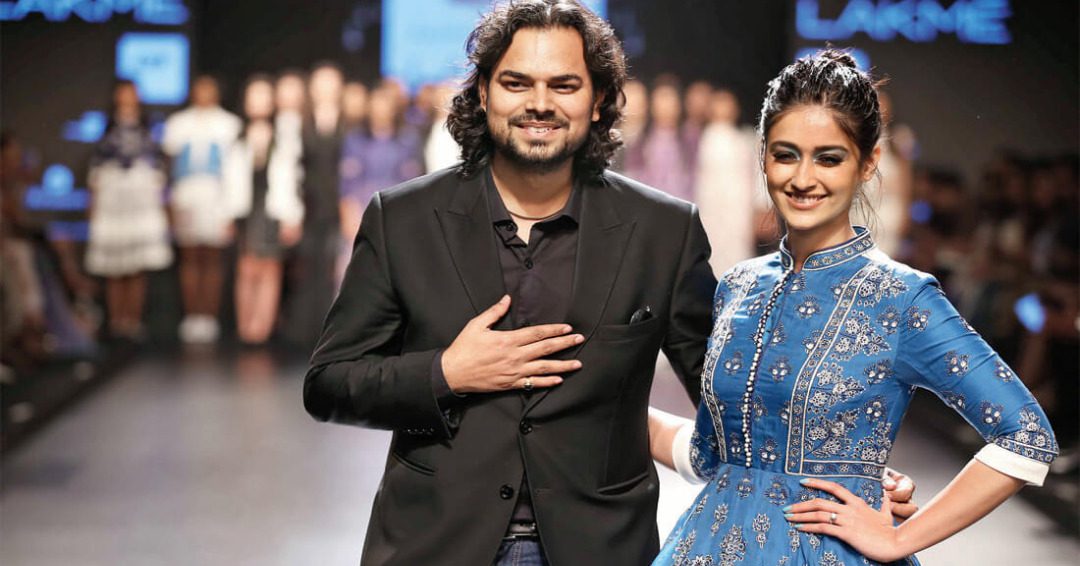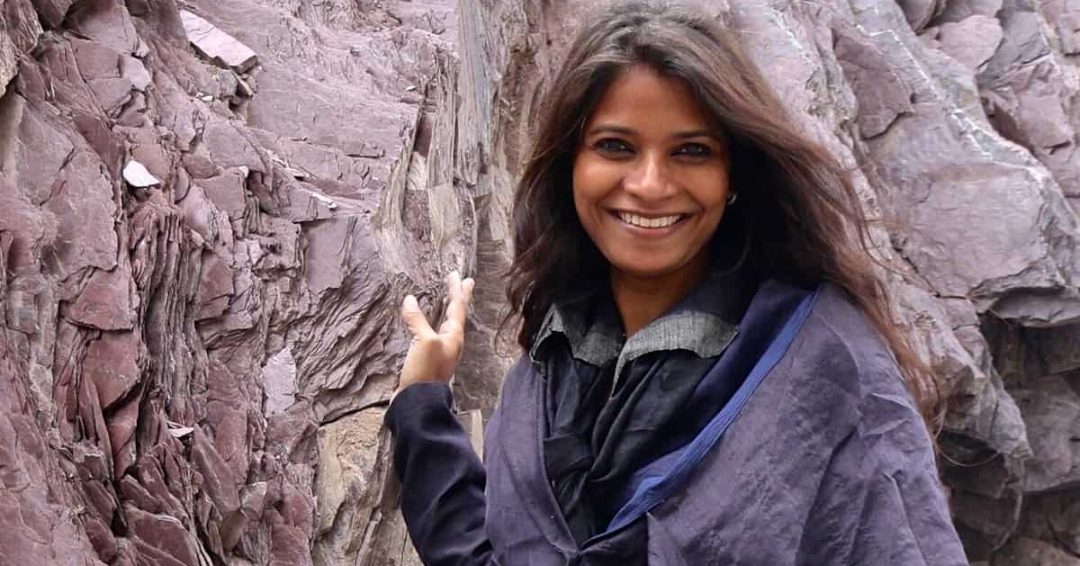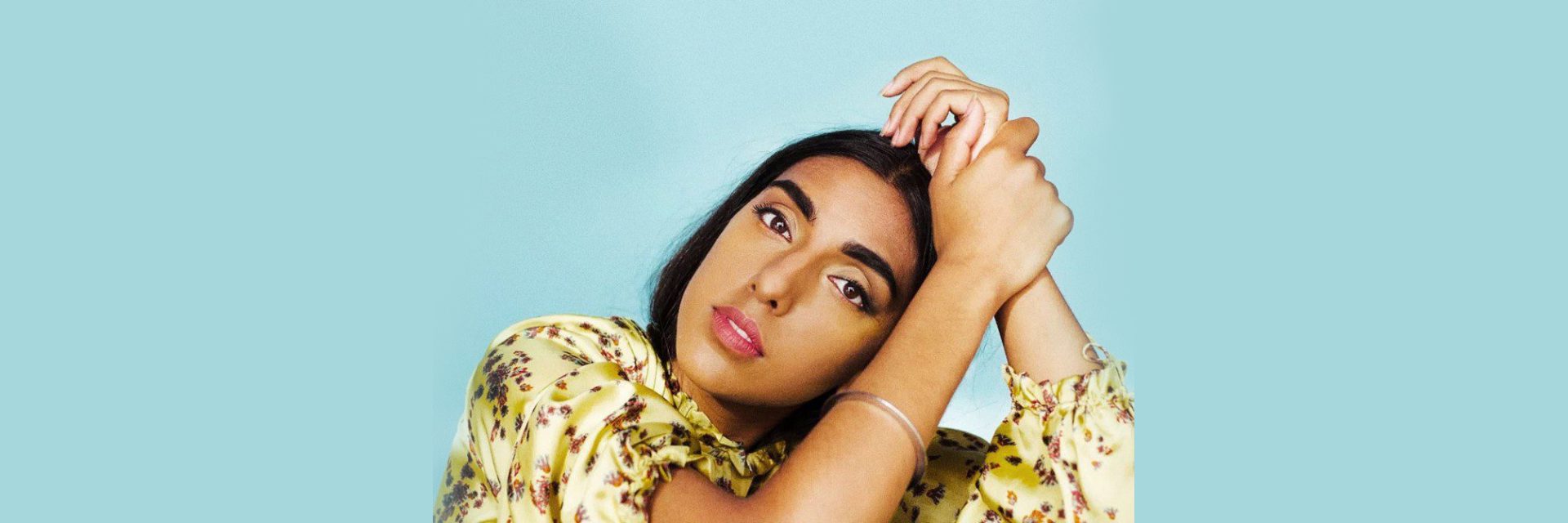(October 25, 2021) Who could have thought that wool could be transformed into a summer fabric? But this novelty is what made fashion designer Rahul Mishra pick up the Woolmark International Prize, making him the first Indian designer to join the league of fashion biggies like Armani and Karl Lagerfeld. When the 42-year-old studied apparel design in National Institute of Design, he thought he wasn’t good enough for any other courses. But the decision turned out to be the best thing for this fashion designer who has become a global name in the world of fashion.
His love for Indian handloom has made him a designer to reckon with in the international market. But being a global designer was a distant dream for this boy from a village in Kanpur who studied at a school that had ₹7 as its monthly fee. But purely on the basis of his talent, Mishra made it big in fashion and how.
Village in Kanpur to fashion institute in Milan
Born in 1979 in the sleepy village of Malhaus near Kanpur, Mihsra’s birthplace first got electricity a year after his birth. With frequent power cuts, Mishra would often finish his homework under the light of a kerosene lamp while attending a school that had no benches and made students sit on durries for their classes. Like most of his friends coming from his village, Mishra had a inclination towards becoming an IAS officer. However, it was his creative side that pulled him towards arts as he developed his love for doodling and creating comic strips while studying at Maharishi Vidya Mandir in Lucknow. So after completing his Physics degree from Kanpur University, Mishra decided to give his love for arts a shot as he enrolled himself in apparel design and merchandising course at National Institute of Design, Ahmedabad in 2003.
It was here that he was exposed to arts like never before. Apart from learning about apparel, he ended up attending classes for filmmaking, furniture and animation. A year into his course and Mishra won himself the Best Student Designer of the Year. This gave him enough confidence to make his debut at the Lakme Fashion Week in 2006 using the Kerala mundu handloom fabric to establish his design aesthetic of traditional meeting contemporary minimalism.
Mishra, who was introduced to sustainable fashion and history of local Indian crafts at NID, soon found himself at the doorsteps of Milan’s Instituto Marangino, thus becoming the first non-European designer to win a scholarship at the prestigious institute. This one year at Marangino helped Mishra find answers to his many through-provoking questions on fashion. It was while walking across Japanese designer Isse Miyake‘s store that he realised that how unmistakably Japanese yet global the clothes were. And this was a turning point in Mishra’s career. “I understood why he had made it big. It was because he was very rooted in Japanese culture. I had found my answer: I had to be rooted in Indian ideology and create something very universal,” he told the Indian Express in an interview.
Bringing Indian handloom to global market
Upon his return, this Global Indian did every bit to showcase collections that were taking Indian traditions forward. Be it ‘Ikat’ from Odhisa or ‘Chikankari’ from Lucknow, Rahul Mishra was making Indian handlooms popular globally at a time when ‘Make In India’ hadn’t become the buzzword. Soon he launched his eponymous label and showcased his work at fashion weeks in Dubai, London and Australia.

Rahul Mishra with a model. (Photo Courtesy: Vogue)
But showcasing his collection at Paris Fashion Week is what changed the trajectory of his career. Mishra, who calls himself a storyteller and believes that every garment has a soul and a philosophy behind it, became the first Indian ever to win the International Woolmark Prize, thus catapulting him into the league of Karl Lagerfeld and Giorgio Armani. Suzy Menkes, the popular fashion critic, called Mishra a “national treasure” after his spectacular win.
The 42-year-old believes in the power of fashion to solve problems and bring about economic change. That’s the reason he essentially works with craft communities in the village of Gujarat, West Bengal and Madhya Pradesh, and even encourages them to innovate. Being himself from a village in Uttar Pradesh who went to Milan, Mishra understands the perils migration for his textile artists. “I don’t want them to come to the cities. I take my work there, develop and safeguard their craft. After all, fashion is the greatest enemy of craft. It’s not about supporting them for one collection, it’s about teaching them everything I know,” he added.
View this post on Instagram
Mishra’s work has found resonance in India and abroad. Known to add milestones in journey, Rahul Mishra became the first Indian designer to showcase haute couture at Paris Fashion Week in 2020. In just over a decade, Mishra has become a global name in the world of fashion, and it’s his philosophy that has worked wonders for him. “Fashion is influenced by my memories of childhood and also the people I meet, but innovation comes from within. I follow a design process which I inculcated in National Institute of Design. So for me it’s not just about a person wearing a shirt or a dress, there is an entire philosophy behind it. This invisible, intangible philosophy is much like A R Rahman’s music, something original, pure and untouched, that is fashion for me,” he told Business Standard.




